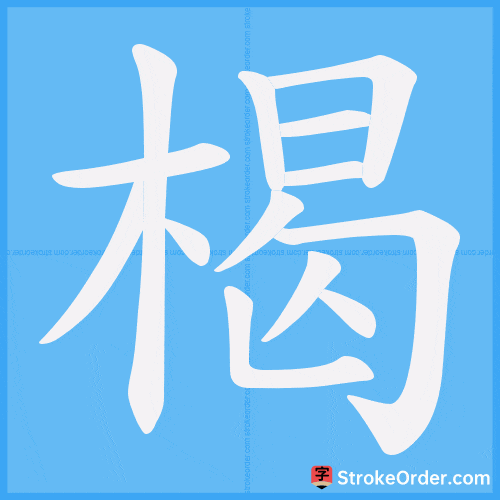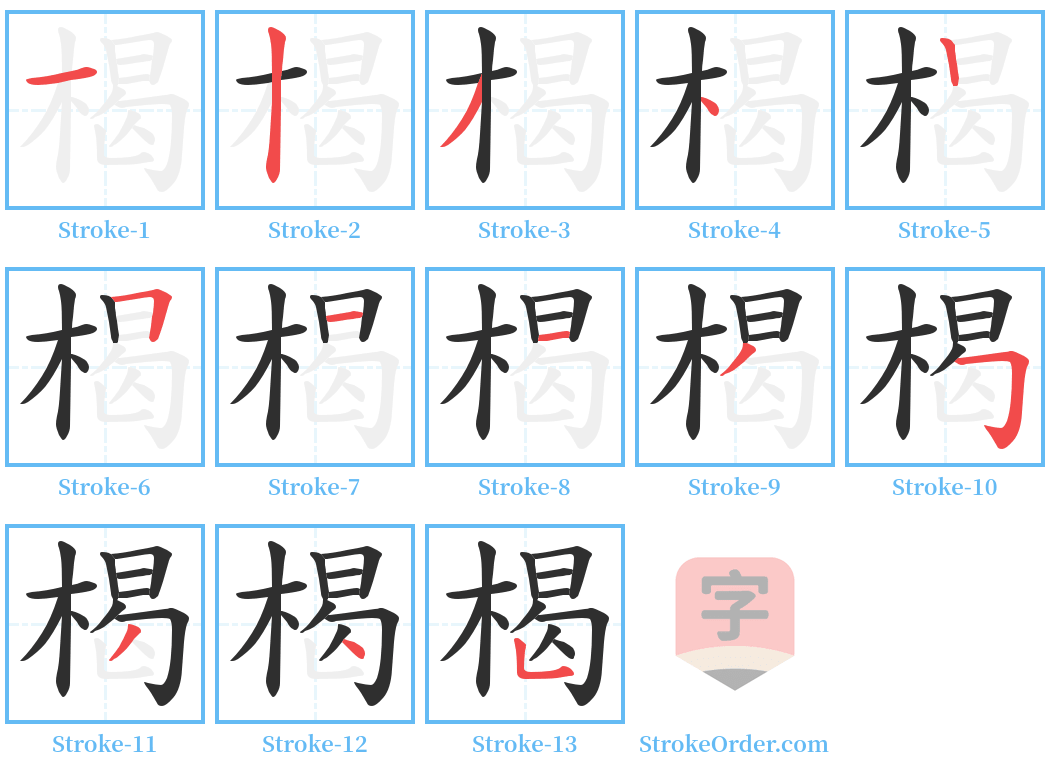楬 Stroke Order
Animated Stroke Order of 楬

Stroke Order Diagrams for 楬

Information of 楬
Pinyin
jiē
Radical
木
Strokes
13 strokes
Usage
★★
Definition
楬 [jié]
1. 同“揭”。
(Same as "揭".)
2. 作标志的木桩子。
(A wooden stake used as a marker.)
楬 [jié]
〈名〉
1. 作标记用的小木桩 ([En.] marking stake)
引
1. 《说文》:楬,楬桀也。从木,曷声。
(From "Shuōwén": "楬" is also pronounced "桀". It is composed of "木" (wood) and "曷" (the sound "he").)
2. 《封氏见闻记》:物有标榜皆谓之楬。
(From "Fengshi Jiwen": All objects with marks are called "楬".)
3. 《周礼·蜡氏》:若有死于道路者,则令埋而置楬焉。
(From "Zhouli": If someone dies on the road, they should be buried and a marking stake should be placed.)
4. 《汉书·尹赏传》:楬著其姓名。
(From "Han Shu": "楬" indicates their name.)
例
又如:楬木(作标记用的小木桩);楬著(用小木桩指示)
(For example: "楬木" - a small wooden stake used for marking; "楬著" - to indicate with a small stake.)
楬 [jié]
〈动〉
1. 标明;揭示 ([En.] mark; indicate)
引
1. 《周礼·泉府》:物楬而书之。司农注:“楬著其物也。”
(From "Zhouli": Objects are marked and noted. The Sima says: "it indicates the object itself.")
例
又如:楬明(标明;揭示)
(For example: "楬明" - to mark; to indicate.)
(*引自繁体辞典解释)
楬 [jié]
〈名〉
1. 乐器名。即敔。一种木制的打击乐器,形似伏虎。演奏时,以一端剖成细条的竹筒,逆刮虎背锯齿,以示乐曲终结。唐·韩愈、孟郊〈征蜀联句〉:「庙献繁馘级,乐声洞椌楬。」
([En.] Name of a musical instrument, also called "敔". It is a wooden percussion instrument resembling a crouching tiger. When played, one end is split into thin bamboo tubes, and played against serrated edges to indicate the end of the music. From Tang poets Han Yu and Meng Jiao's "Zheng Shu Lian Ju": "In the temple, lavish offerings are made, the music sounds as it concludes with 楬.")